Camphor laurel
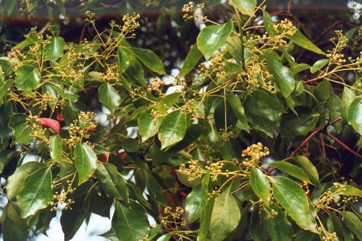
It grows in tropical and subtropical locations. It needs a well drained, fertile, sandy loam. It does best in coller locations but needs a temperature above 9°C. In tropical Queensland it grows from 650-1000 m altitude. It is grown in China in areas without a severe winter. In Melbourne Botanical Gardens. It suits hardiness zones 9-11. In Yunnan.
Also known as:
Ai-kanfor, Camphor, Chuang, Ho wood, Kamfer, Kamifaoro, Kapoor, Kapur, Karppuram, Karpur, Karpurammu, Kuqmiqsail, Long nao, Mushkapur, Noknamu, Payok, Payuk, Pohon kapur barus, Ravinsara, Re, Zhang, Zhangshu
Synonyms
- Camphora camphora (L.) H. Karst.
- Camphora officinarum Nees
- Cinnamomum simondii Lec.
- Cinnamomum camphora (L.) Sieb. var. nominale Hayata ex Matsum
- Cinnamomum camphora (L.) Nees & Eberm. var. glaucescens (Braun.) Meissn.
- Laurus camphora L.
- Persea camphora Spreng.
- and others
Edible Portion
- Leaves, Bark, Root
Where does Camphor laurel grow?
Found in: Africa, Asia, Australia, Central America, China, Cuba, Dominican Republic, East Africa, East Timor, Europe, Fiji, Haiti, Hawaii, Himalayas, India, Indochina, Indonesia, Italy, Japan, Korea, Laos, Madagascar, Malaysia, Marquesas, Mozambique, Myanmar, Nepal, North America, Pacific, Pakistan, Sao Tome and Principe, SE Asia, South Africa, Southern Africa, Suriname, Taiwan, Thailand, Timor-Leste, Turkey, United States, Vietnam, West Indies, Zimbabwe
Notes: The bark and wood is used to make camphor crystals. There are about 250 Cinnamomum species. The leaves are used in medicine. It has anticancer properties. It can become invasive.
Growing Camphor laurel
Cultivation: It can be grown from seed. The plant spreads by suckers. It can be grown by softwood cuttings.
Edible Uses: Young shoots and leaves are boiled and eaten. Edible crystalline camphor is used in small quantities as flavouring in milk. It yields an essential oil used to flavour baked goods and drinks. The bark, root and leaves are used for tea. Caution: It is poisonous in excess.
Production: Trees can live for several hundred years.
Nutrition Info
per 100g edible portion| Edible Part | Energy (kcal) | Protein (g) | Iron (mg) | Vitamin A (ug) | Vitamin c (mg) | Zinc (mg) | % Water |
|---|---|---|---|---|---|---|---|
| - | - | - | - | - | - |
Camphor laurel Photos

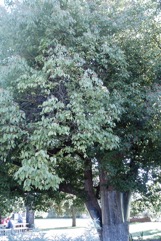
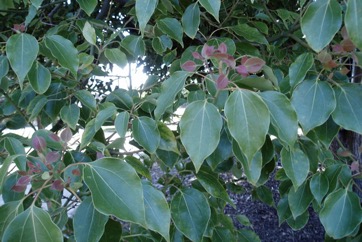
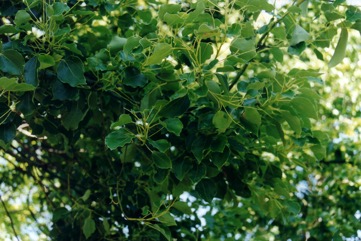
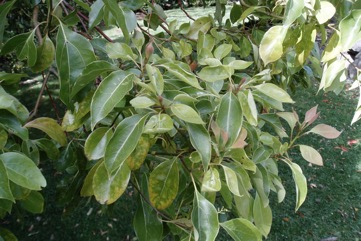
References
Ambasta, S.P. (Ed.), 2000, The Useful Plants of India. CSIR India. p 125
Arora, R. K., 2014, Diversity in Underutilized Plant Species - An Asia-Pacific Perspective. Bioversity International. p 102
Barwick, M., 2004, Tropical and Subtropical Trees. A Worldwide Encyclopedic Guide. Thames and Hudson p 115
F. Berchtold & J. S. Presl, Prir. rostlin 2:36, 47-56, t. 8. 1825
Bodkin, F., 1991, Encyclopedia Botanica. Cornstalk publishing, p 258
Bremness, L., 1994, Herbs. Collins Eyewitness Handbooks. Harper Collins. p 48
Brown, D., 2002, The Royal Horticultural Society encyclopedia of Herbs and their uses. DK Books. p 169
Cooper, W. and Cooper, W., 2004, Fruits of the Australian Tropical Rainforest. Nokomis Editions, Victoria, Australia. p 245
Cronin, L., 1989, The Concise Australian Flora. Reed. p 145
Cundall, P., (ed.), 2004, Gardening Australia: flora: the gardener's bible. ABC Books. p 379
Ekman Herbarium records Haiti
Etherington, K., & Imwold, D., (Eds), 2001, Botanica's Trees & Shrubs. The illustrated A-Z of over 8500 trees and shrubs. Random House, Australia. p 211
Facciola, S., 1998, Cornucopia 2: a Source Book of Edible Plants. Kampong Publications, p 138
Flora of Pakistan. www.eFloras.org
Hani Medicine of Xishuangbanna, 1999, p 351
Hibbert, M., 2002, The Aussie Plant Finder 2002, Florilegium. p 67
Hussey, B.M.J., Keighery, G.J., Cousens, R.D., Dodd, J., Lloyd, S.G., 1997, Western Weeds. A guide to the weeds of Western Australia. Plant Protection Society of Western Australia. p 172
Kintzios, S. E., 2006, Terrestrial Plant-Derived Anticancer Agents and Plant Species Used in Anticancer research. Critical Reviews in Plant Sciences. 25: pp 79-113
Krishen P., 2006, Trees of Delhi, A Field Guide. DK Books. p 113
Little, E.L., 1980, National Audubon Society Field Guide to North American Trees. Alfred A. Knopf. p 448
Li Xi-wen, Li Jie, Huang Puhua, van der Werff, H., Lauraceae. Flora of China.
Lord, E.E., & Willis, J.H., 1999, Shrubs and Trees for Australian gardens. Lothian. p 50
Marinelli, J. (Ed), 2004, Plant. DK. p 449
Nicholson, N & H., 1996, Australian Rainforest Plants 2, Terania Rainforest Publishing. NSW. p 69
Paczkowska, G. & Chapman, A.R., 2000, The Western Australian Flora. A Descriptive Catalogue. Western Australian Herbarium. p 278
Plants for a Future database, The Field, Penpol, Lostwithiel, Cornwall, PL22 0NG, UK. http://www.scs.leeds.ac.uk/pfaf/
Plants of Haiti Smithsonian Institute http://botany.si.edu/antilles/West Indies
Recher, P, 2001, Fruit Spirit Botanical Gardens Plant Index. www.nrg.com.au/~recher/ seedlist.html p 5
Smith, A.C., 1981, Flora Vitiensis Nova, Lawaii, Kuai, Hawaii, Volume 2 p 122
Song, M., et al, 2013, Traditional knowledge of wild edible plants in Jeju Island, Korea. Indian Journal of Traditional Knowledge. 12(2) pp 177-194
Staples, G.W. and Herbst, D.R., 2005, A tropical Garden Flora. Bishop Museum Press, Honolulu, Hawaii. p 366
Sukarya, D. G., (Ed.) 2013, 3,500 Plant Species of the Botanic Gardens of Indonesia. LIPI p 196
Swaminathan, M.S., and Kochnar, S.L., 2007, An Atlas of major Flowering Trees in India. Macmillan. p 228
Valder, P., 1999, The Garden Plants of China. Florilegium. p 275
Van Sam, H. et al, 2004, Trees of Laos and Vietnam: A Field Guide to 100 Economically or Ecologically Important Species. Blumea 29 (2004) 201-349
van Wyk, B, van Wyk, P, and van Wyk B., 2000, Photographic guide to Trees of Southern Africa. Briza. p 84
Williams, J.B., Harden, G.J., and McDonald, W.J.F., 1984, Trees and shrubs in rainforests of New South Wales and Southern Queensland. Univ. of New England, Armidale. p 80
Wilson, A.J.G., (Ed.), 1994, Flora of Australia Volume 49, Oceanic Islands1, Australian Government Publishing Service, Canberra. p 46
World Checklist of Useful Plant Species 2020. Royal Botanic Gardens, Kew
Young, J., (Ed.), 2001, Botanica's Pocket Trees and Shrubs. Random House. p 246